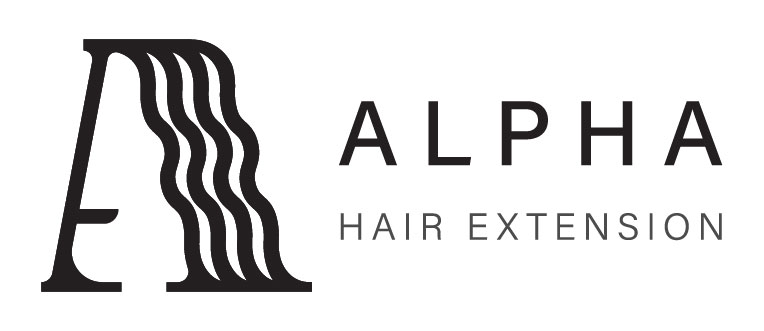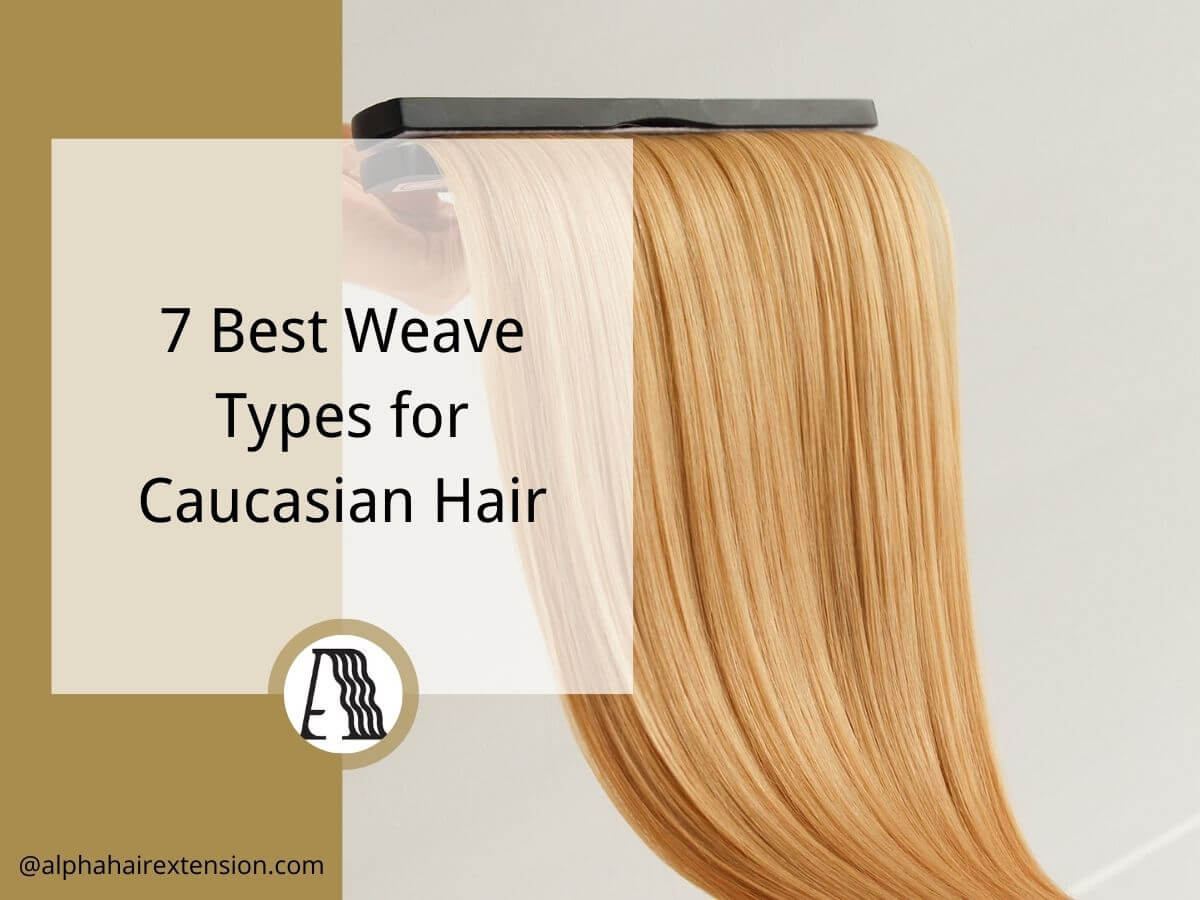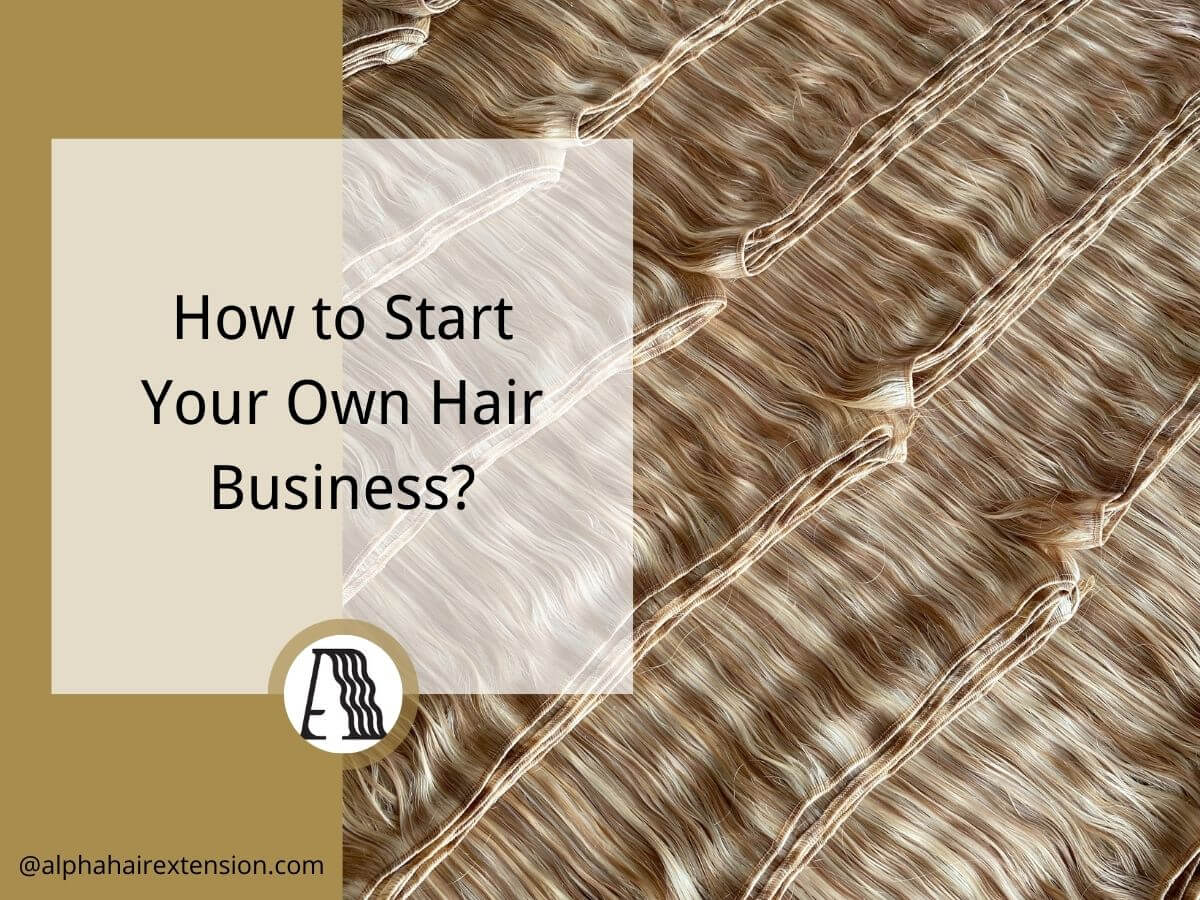Early on, I bought tape-in extensions in bulk without understanding the differences. Some had strong adhesive and lasted, while others slipped after a few washes. That mistake cost me.
If you want to keep your customers satisfied and ensure repeat business, choosing the right type of tape-in extensions is essential. Some hold better, feel more natural, and last longer—while others lead to frustration, costly replacements, and unhappy clients.
After years of testing multiple brands, speaking with industry professionals, and seeing firsthand what works, I’ve put together a guide that’s based on real results, not just manufacturer claims.
In this guide, we’ll break down eight different types of tape-in extensions, their unique advantages, and which ones are best suited for various client needs and business models.
By the end of this article, you’ll know exactly what to look for when choosing tape-in extensions—ensuring high-quality results and satisfied clients every time.
Let’s break it all down!
1. Classic Tape-In Hair Extensions
When I first stocked classic tape-in hair extensions, they seemed like a safe choice—widely used, easy to apply, and affordable. But after testing different suppliers, I quickly learned that not all classic tape-ins are made the same. Some had weak adhesive, causing slippage. Others had stiff, low-quality hair that didn’t blend well.
If you’re sourcing tape-ins, how do you separate high-quality from cheap imitations? A bad batch means frustrated customers, refund requests, and wasted inventory. The right choice? A product that builds your brand’s reputation and keeps buyers coming back.
Pros and Cons
Pros:
- High Demand – One of the most widely used hair extension types, easy to sell.
- Quick Application – Saves time for salons, increasing service efficiency.
- Bulk Availability – Easy to source in large quantities from manufacturers.
- Lower Upfront Cost – more affordable than fusion or hand-tied extensions.
- Reusable – High-quality tape-ins can be reused for proper maintenance, increasing product value.
Cons:
- Frequent Maintenance Needed – Salons must educate clients on reapplication every 6-8 weeks.
- More Fragile – Prone to dryness and requires careful handling.
Final Thought
Should you stock classic tape-in extensions? If your business focuses on high-volume sales and affordability, they are a solid choice. But selecting high-quality tape and premium hair ensures better retention, fewer returns, and stronger customer loyalty.
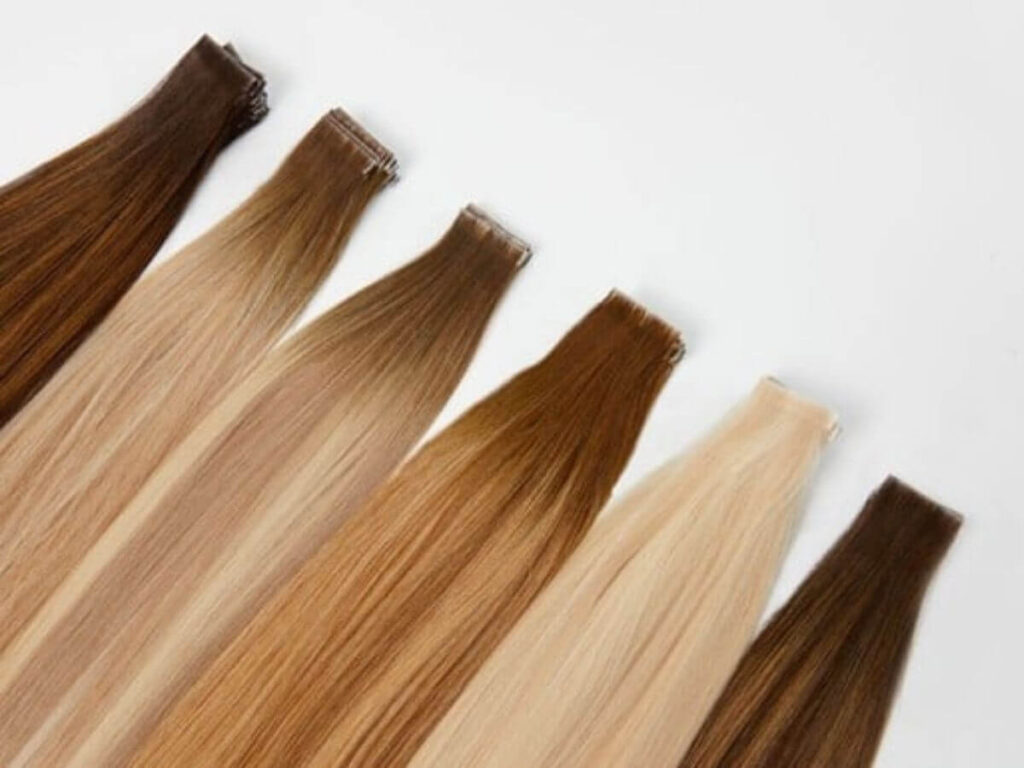
2. Invisible Tape-In Hair Extensions
Invisible tape-in hair extensions are a premium version of classic tape-ins. But here’s the problem—not all invisible tape-ins are actually invisible. Some have thick edges that make them obvious. Others use weak adhesive that causes slippage. If you’re stocking for salons or retailers, you can’t afford to sell products that don’t deliver.
Pros and Cons
Pros :
- Premium Market Appeal – High demand from salons and professional stylists.
- Seamless Finish – Virtually undetectable, making them a top-tier product.
- Higher Profit Margins – Luxury pricing allows for better returns.
- Reusable with Proper Care – Strong tape backing supports multiple applications.
Cons:
- Higher Upfront Cost – Premium materials mean a larger investment.
- Inconsistent Supplier Quality – Some “invisible” tape-ins still have thick, noticeable edges.
Final Thought
Are invisible tape-in extensions the right addition to your inventory? If you serve high-end salons and retailers, they offer premium pricing opportunities and strong demand. However, choosing thin, truly invisible tape with strong adhesive is key to avoiding customer complaints.

3. Single-Sided Tape-In Hair Extensions
Single-sided tape-in hair extensions are a game-changer for clients with fine or thin hair. Unlike double-sided tape-ins, which sandwich natural hair between two extension pieces, single-sided tape-ins use only one extension piece and a single-sided adhesive strip on the other side.
Pros and Cons
Pros:
- Expands Market Reach – A must-have for salons catering to clients with delicate hair.
- Premium Pricing Opportunity – Can be sold as a specialty extension at a higher price.
- High Demand in Luxury Markets – A must-have for businesses catering to premium clientele.
Cons:
- Limited Availability – Not all suppliers offer high-quality single-sided tape-ins.
- Higher Cost Per Piece – Uses more premium materials, increasing wholesale price.
Final Thought
Should you stock single-sided tape-in extensions? If you sell to salons catering to fine or thinning hair, they’re a must-have. But finding reliable suppliers that offer strong adhesive and high-quality hair will determine your long-term success in this niche.
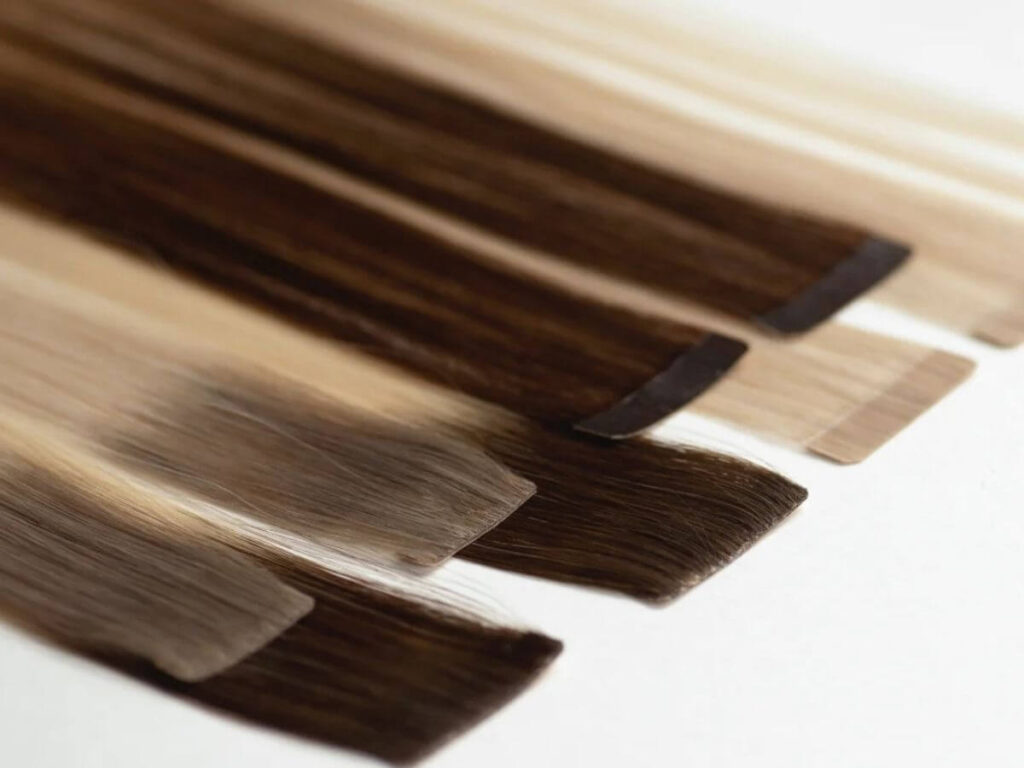
4. Double-Sided Tape-In Hair Extensions
Double-sided tape-in hair extensions use two adhesive strips to sandwich a section of natural hair between them. I know that this creates a secure, long-lasting bond that holds up through daily wear, washing, and styling.
If you supply salons or retailers, you know durability is everything. A good double-sided tape-in extension locks in place, resists shedding, and keeps clients coming back. But how do you know which ones will perform?
Pros and Cons
Pros:
- Stronger Hold Than Single-Sided Tape-Ins – Reduces slippage, ensuring fewer customer complaints.
- High Demand from Salons and Retailers – A staple product that moves quickly in inventory.
- Bulk Production is Readily Available – More manufacturers produce them compared to niche extension types.
- Reusable for Multiple Applications – High-quality versions allow for retaping, increasing resale value.
- Scalability for Businesses – Easy to expand product lines by offering various lengths, colors, and textures.
Cons:
- Quality Varies by Supplier – Low-end versions may have weak adhesive, leading to higher return rates.
- More Complex Application for Stylists – Salons may need proper training to avoid improper placement and slippage.
- Increased Storage and Handling Needs – Double-sided tape-ins require careful storage to prevent adhesive contamination.
Final Thought
Are double-sided tape-in extensions a smart investment? Well, if you want to stock durable, high-demand extensions that work for most clients, they’re a great option. But I recommend to check strong tape adhesion and high-quality manufacturing for repeat business.
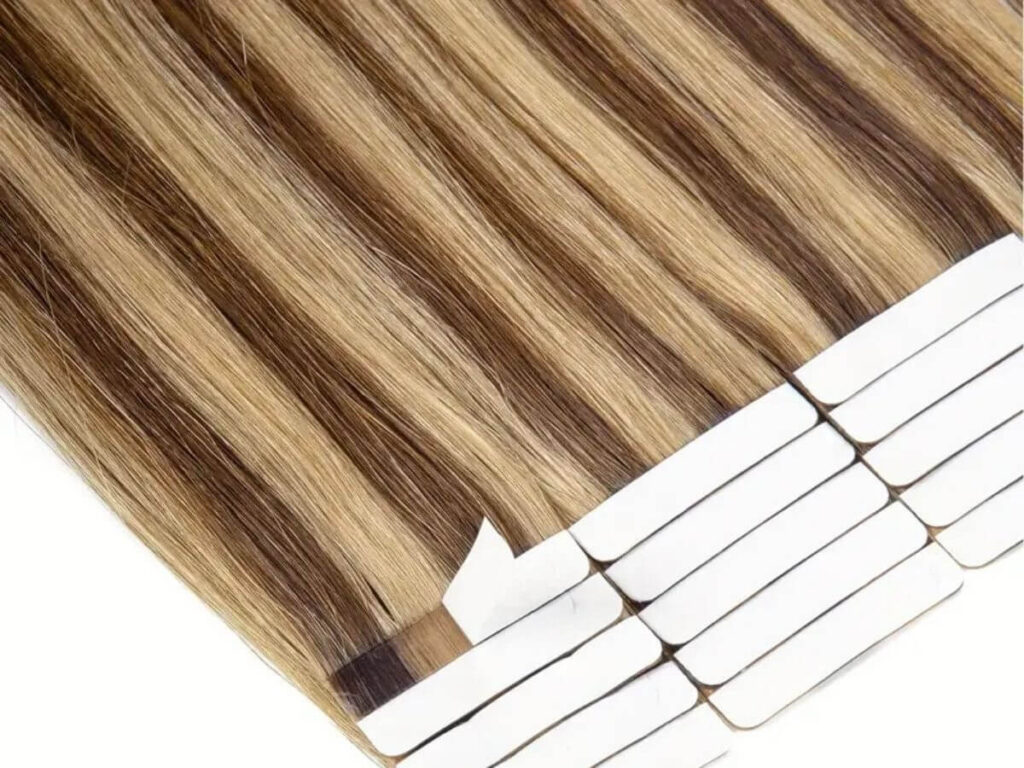
5. Skin Weft Tape-In Hair Extensions
Skin weft tape-in extensions are designed to mimic the scalp, creating a more natural appearance than standard tape-ins. Instead of a traditional PU tape strip, the adhesive is embedded in a thin, flexible layer of polyurethane (PU) that looks like real skin.
Pros and Cons
Pros:
- Most Natural-Looking Tape-In Option – Blends perfectly with the scalp, reducing visibility.
- Preferred by High-End Salons – Clients seeking a seamless look will pay premium prices.
- Flexible and Lightweight – Comfortable for long-term wear, increasing customer satisfaction.
Cons:
- Requires Proper Application – Must be installed correctly to prevent lifting.
- Not as Widely Known as Classic Tape-Ins – May require additional marketing to educate buyers.
Final Thought
Should you add skin weft tape-ins to your product line? If your business caters to salons and clients looking for the most natural-looking extensions, they’re a profitable addition. But choosing flexible, lightweight skin wefts with secure adhesive is the key to keeping customers satisfied.
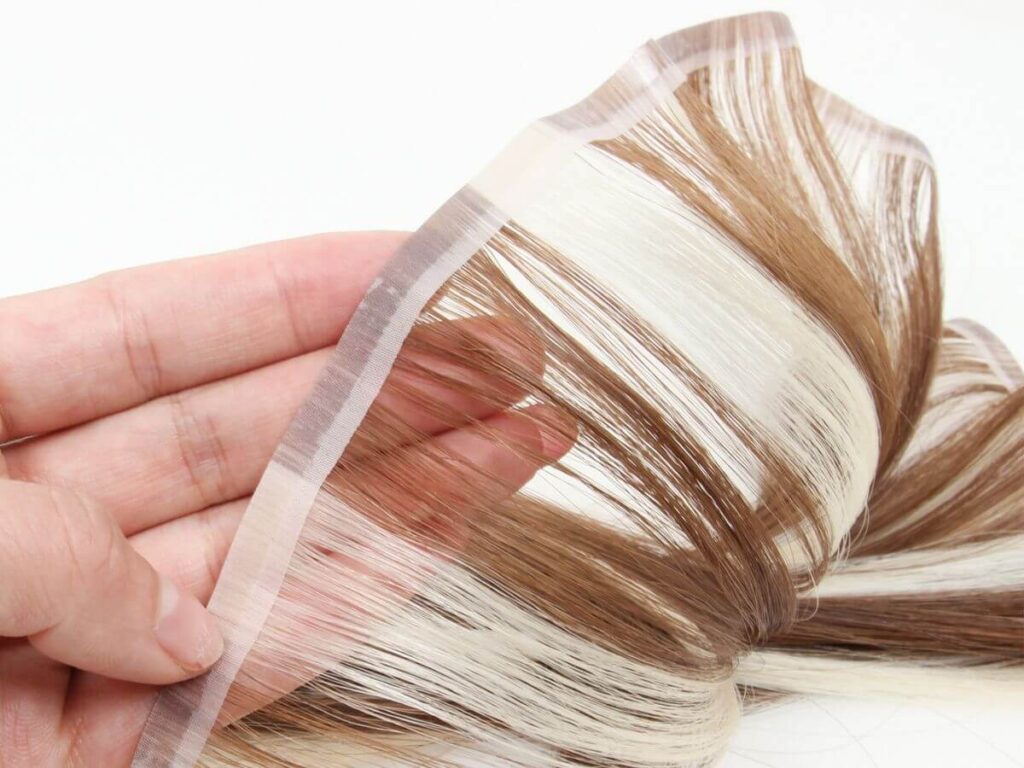
6. Synthetic Tape-In Extensions
The first time I considered stocking synthetic tape-in extensions, I was unsure. Could they match the natural look and performance of human hair? Some suppliers promised high-quality fibers, while others sold cheap, plastic-like strands that tangled instantly.
Synthetic tape-in extensions provide a budget-friendly alternative to human hair extensions. Made from heat-resistant fibers, they mimic natural hair but come with limitations.
Pros and Cons
Pros:
- Lower Wholesale Costs – More affordable than human hair, making bulk purchases easier.
- High Profit Margins – Lower production costs allow for competitive pricing and better resale value.
- No Sourcing Issues – Readily available, eliminating concerns about donor hair supply fluctuations.
- Color Consistency Across Batches – No variations like human hair, reducing customer complaints.
- Ideal for Temporary Wear Markets – Great for businesses targeting fashion, cosplay, or short-term use.
Cons:
- Lower Perceived Value – Many salons and high-end retailers prefer human hair, making synthetic a harder sell in premium markets.
- Shorter Product Lifespan – More prone to frizz, matting, and wear, leading to faster customer turnover.
- Storage and Handling Challenges – Synthetic fibers require proper packaging to prevent tangling and damage during transport.
Final Thought
Are synthetic tape-ins a good fit for your business? If you target budget-conscious buyers, they can be a profitable option. But if your clientele expects long-lasting, natural-looking extensions, human hair may be the better investment.
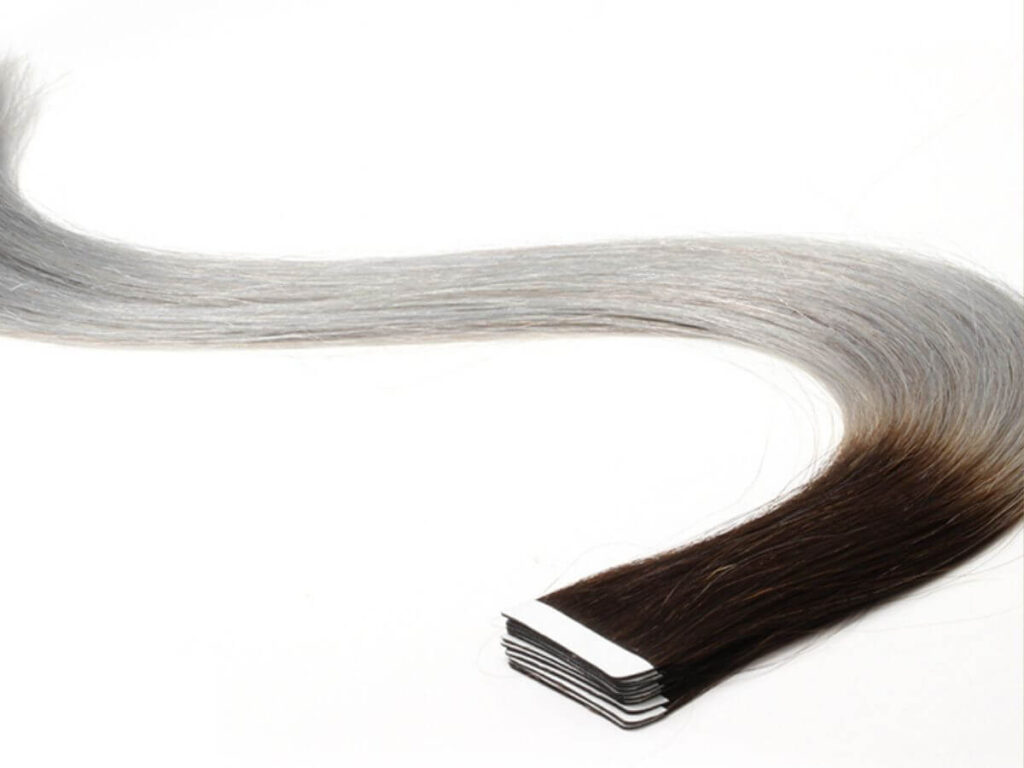
7. Colored & Highlighted Tape-In Hair Extensions
For clients who want highlights, balayage, or ombré effects without chemical treatments, pre-colored tape-in extensions are the perfect choice.
Pros and Cons
Pros:
- High Demand in Trend-Driven Markets – Fashionable colors attract customers looking for temporary color changes.
- No Chemical Damage to Natural Hair – A top selling point for salons and stylists.
- Fast and Easy Application – Saves salon time and increases service efficiency.
- Bulk Orders Available in Various Shades – Allows businesses to stock a diverse range of colors.
Cons:
- Color Fading Over Time – Lower-quality extensions lose vibrancy quickly, leading to dissatisfied customers.
- Inconsistent Supplier Quality – Some manufacturers struggle to match advertised shades.
- Higher Cost for Premium Colors – Custom or unique shades require specialized dyeing, increasing production costs.
- Storage and Handling Challenges – Improper storage can cause color oxidation or damage to the adhesive.
Final Thought
Should you stock colored and highlighted tape-ins? If your business serves trend-driven customers or salons offering quick color changes, they’re a strong investment. But choosing high-quality, fade-resistant extensions is key to maintaining customer trust.
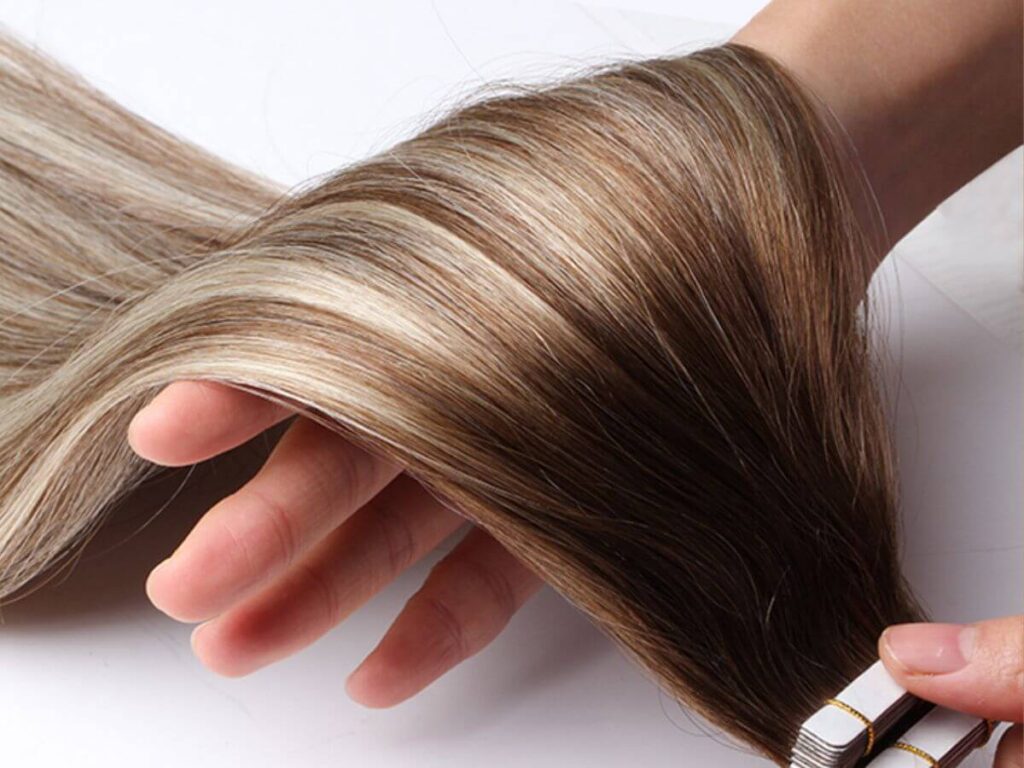
8. Curly & Wavy Tape-In Hair Extensions
Many tape-in extensions cater to straight hair, making it difficult for clients with curly or textured hair to find a good match. Curly and wavy tape-ins solve this issue by offering pre-textured extensions designed for natural curls or waves.
Pros and Cons
Pros:
- Expands Market Reach – Attracts customers with textured hair, increasing sales potential.
- Higher Profit Margins – Premium pricing due to specialized processing.
- Less Competition – Fewer suppliers offer high-quality curly tape-ins, making it a niche product.
- Long-Term Customer Retention – Salons and stylists need consistent reorders when they find quality.
Cons:
- Inconsistent Curl Quality – Suppliers may struggle to provide uniform curl patterns in bulk.
- Higher Wholesale Cost – Extra processing increases manufacturing expenses.
Final Thought
Should you stock curly and wavy tape-in extensions? If your business serves salons and retailers catering to textured hair, they’re a profitable addition. But choosing high-quality curls that hold through multiple washes is key to maintaining a strong reputation.
Conclusion
Not all tape-in hair extensions perform the same. Some hold stronger, blend better, and last longer. Your business depends on stocking the right ones.
I’ve seen businesses struggle with bad stock—weak adhesive, poor hair quality, and inconsistent suppliers. That’s why choosing the right tape-ins is critical.
Do you have the best selection for your market? Are your extensions keeping clients happy?
Let’s make sure you do.
Contact us today to get premium tape-in hair extensions that sell.
Explore Related Resources
Want to see more products? We’ve got plenty of options that might just be the perfect fit for you:
Still haven’t found what you’re looking for? Don’t hesitate to contact us. We’re available around the clock to assist you.
